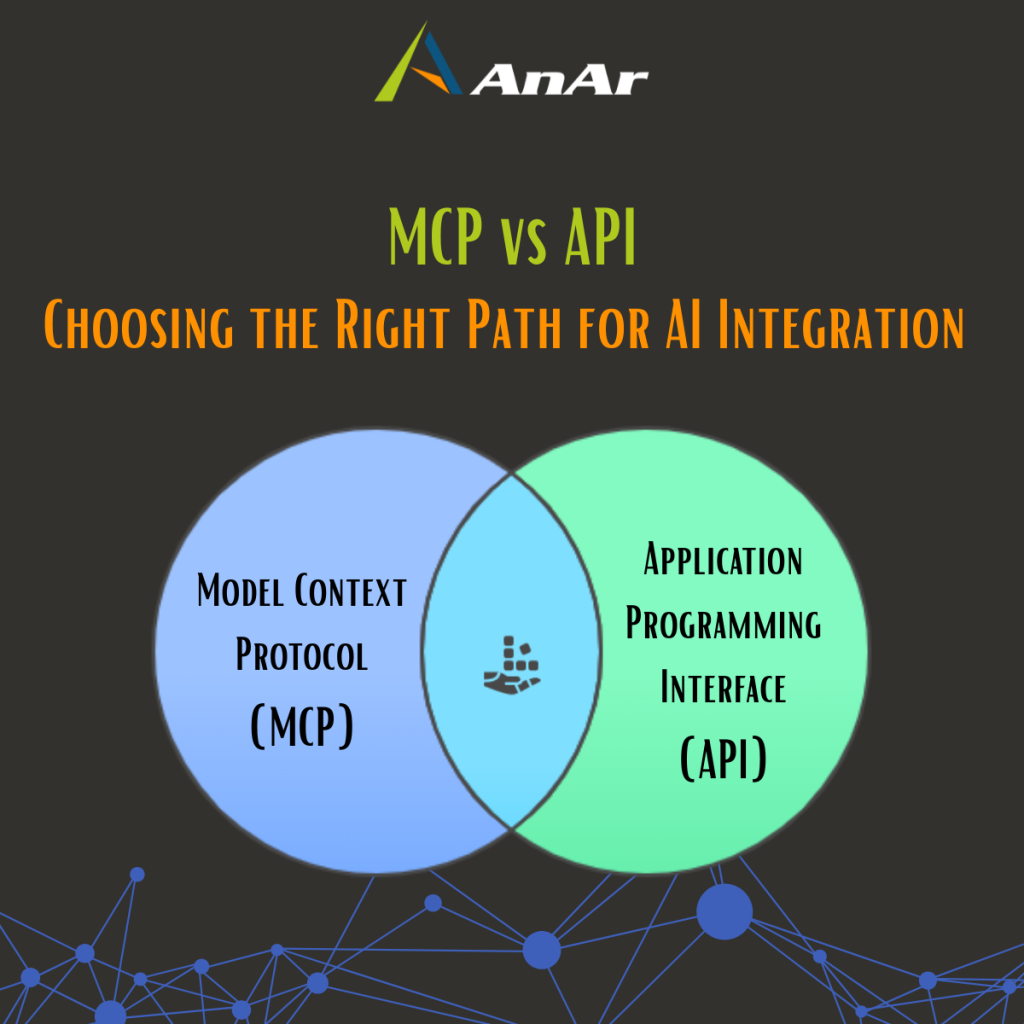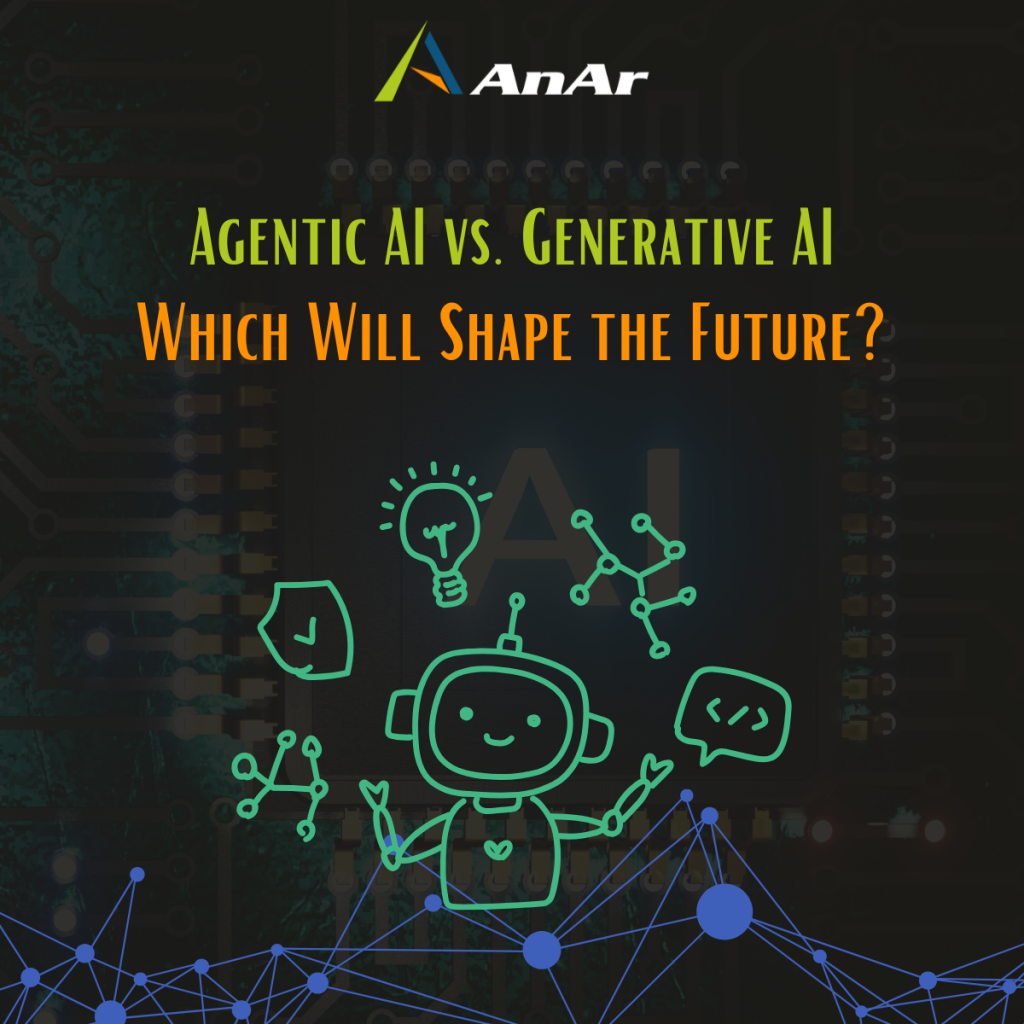Key to Product Innovation Services

People
Providing talent with a silo-free work environment and recognizing them as the most crucial component of the firm works wonders. Strategic sourcing and skill development are two of our specialties.



Metrics
The correct development life cycle metrics are what determine the customer value. We assist clients in selecting the appropriate measures to gauge their progress and regularly incorporate comments as input for better results.
Portfolio Services
Insights on Product Innovation and Strategy Services
- MCP vs API: Choosing the Right Path for AI IntegrationMCP vs API: Learn how to enable dynamic data access and scale intelligent AI agents with modern integration techniques.
- Agentic AI vs. Generative AI: Which Will Shape the Future?Is the future of AI about creativity or autonomy? This blog breaks down the unique strengths of Generative and Agentic AI—and reveals why their intersection could define the next phase of digital transformation.
- How AI Is Reshaping Agile Methodologies in Software Development?Discover how AI-powered insights refine Agile practices, enhancing software development from testing to sprint planning.
FAQ
What is Agile?
Agile lets teams offer value to their clients more quickly and with fewer difficulties through an iterative approach to project management and software development. In other words, the capacity to innovate and adapt to change is agile. It is a strategy for navigating a complex and chaotic environment and eventually succeeding in it.
It comes down to considering how you can comprehend what is happening in the environment you are in right now, recognize the uncertainty you are experiencing, and determine how to react to it as you go.
What is Agile Development?
The concept of "agile software development" refers to a variety of frameworks and procedures that are based on the values and guiding principles outlined in the Manifesto for Agile Software Development and its supporting 12 Principles.
It is more than frameworks such as Scrum, Extreme Programming, Test-Driven Development (TDD), paring programming, and Feature-Driven Development (FDD), etc., or group activities like planning a sprint or doing daily stand-ups.
Agile differs from traditional methods of software development in part because it places special emphasis on the people executing the job and their interactions with one another. Collaboration between self-organizing cross-functional teams using best practices for their context leads to solutions. Teams adopt the iterative agile development technique when working on software. Self-organized, cross-functional teams regularly assess conditions and user requirements to modify initiatives. With short-term deliverables in each sprint, Scrum teams continuously improve quality.
What is Agile Methodology?
The Agile methodology is a strategy to manage projects by segmenting them into several phases. Continuous improvement is required at every stage, as well as ongoing collaboration with stakeholders. Teams go through a cycle of planning, execution, and assessment processes once the job starts. With team members and project stakeholders, ongoing collaboration is essential.
An overview of Agile Methodology-
The name "Agile" was chosen by the writers of the Agile Manifesto to describe the entire concept because it embodied the adaptability and capacity for change that were crucial to their methodology.
Below are the four main values of Agile:
- Individuals and interactions over processes and tools
- Working software over comprehensive documentation
- Customer collaboration over contract negotiation
- Responding to change over following a plan
What is Agile Transformation?
The process of transitioning an entire organization to a quick-thinking, responsive strategy based on agile principles is known as agile transformation. This transition is not just happening within the product development team. The Agile Manifesto's values and principles must be embraced by every person working in every department for an organization to be truly Agile. This entails a readiness to be more adaptable and responsive, to work well with others, and to speak honestly.
Agile transformation is a far bigger project than simply altering how software is developed, even if any organization going through this transformation is likely to also adopt agile, Scrum, Lean, etc.
Instead, this is an extensive organizational reform that goes much beyond product development. By fostering an environment that values creativity and innovation, empowering staff members, and eliminating extra layers of bureaucracy, the organization is to be given fresh vitality.
What is Design Thinking?
In an iterative process called "design thinking," you try to understand your customers, question presumptions, redefine challenges, and come up with creative solutions you can prototype and test.
In other words, the foundation of design thinking is human-centered. It promotes businesses to put the needs of the customers first, which results in better processes, services, and goods.
What is the underlying human need when you get down to developing a solution for a business requirement that should always be your first consideration?
Design thinking is more than simply a concept; it offers a variety of practical techniques to support the application of a completely new way of thinking:
Basically, design thinking:
- Focuses on a keen desire to comprehend the individuals for whom we build goods and services.
- Facilitates observing and fostering empathy for the target consumers.
- Helps our question in a more empathetic manner by considering implications, assumptions, and the situation at hand.
- Quite helpful for tackling issues that are vague or unidentified.
- Involves continual exploration of new concepts and ideas through sketching and prototypes.









